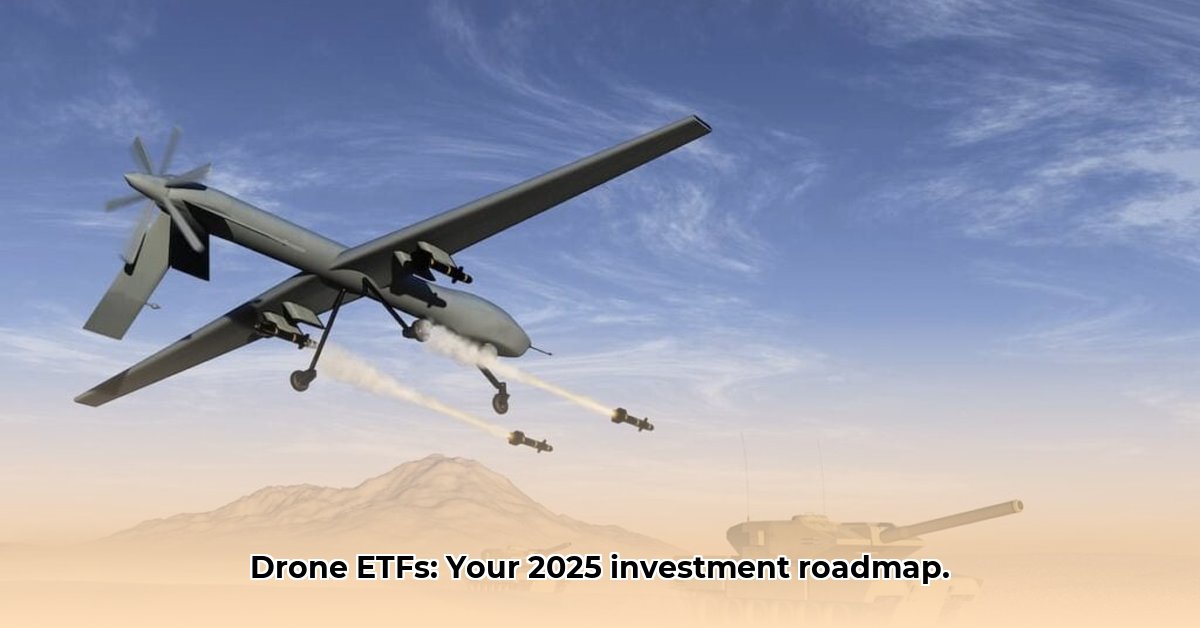
Drone ETF: Your Guide to Soaring Profits in 2025 and Beyond
The drone industry is experiencing explosive growth, with projections reaching a staggering $87.5 billion by 2033. This surge is driven by diverse applications, from e-commerce deliveries and infrastructure inspections to military operations. But how can investors capitalize on this rapidly expanding market while mitigating risk? Drone ETFs offer a compelling solution. This guide will dissect the complexities of drone technology, the associated investment risks, and the strategic approaches to maximize returns in 2025 and beyond.
Understanding Drone ETFs: Your Ticket to the Drone Revolution
Drone ETFs (Exchange-Traded Funds) provide diversified exposure to the drone industry. Instead of investing in individual companies, you gain a stake in a portfolio of stocks representing various players in this dynamic sector. This diversification mitigates the risk associated with individual company performance fluctuations. Think of it as building a well-rounded investment portfolio rather than relying on a single, potentially volatile stock. While diversification reduces risk, remember that all investments carry inherent uncertainty, influenced by broader economic conditions and industry-specific news. Isn't it reassuring to know your investment isn't entirely reliant on the success of a single company?
Key Players and Their Potential: Picking the Winning Teams
Several key players significantly shape the drone industry landscape. Companies like Kratos, renowned for its advanced military drone technology including hypersonic drones, and AeroVironment (AVAV), benefiting from increased defense spending, are strong contenders. However, the market is dynamic. The case of EHang highlights the inherent volatility. Therefore, thorough due diligence is paramount. Consider factors beyond stock price: financial health, technological innovation, and overall market standing. Experts suggest focusing on companies with diverse applications, such as Amazon’s package delivery drones, to mitigate risk.
Here's a comparative risk assessment matrix:
| Technology/Company | Regulatory Risk | Technological Risk | Market Risk | Financial Risk |
|---|---|---|---|---|
| Amazon MK30 | Medium | Low | Low | Low |
| EHang EH216-S | High | Medium | High | High |
| Kratos | Low | Medium | Low | Low |
| AeroVironment (AVAV) | Medium | Low | Low | Low |
| Boeing | Low | Low | Medium | Low |
| Joby | High | High | High | Medium |
| Northrop Grumman (NOC) | Low | Low | Low | Low |
Note: This is a simplified risk assessment. Actual risk profiles could be more complex.
Navigating the Regulatory Airspace: The Rules of the Game
The regulatory environment presents a significant challenge for the drone industry. Governments worldwide are still formulating regulations concerning drone identification, air traffic management, and data privacy. This regulatory patchwork varies considerably across nations, potentially hindering or accelerating company growth. Staying informed about evolving regulatory changes is crucial for investors. How can investors stay ahead of the curve in this ever-changing regulatory landscape?
Your Action Plan: Making Informed Decisions
A strategic approach to investing in Drone ETFs is essential. Consider these short-term and long-term strategies:
Short-Term Investment Strategy (0-1 Year):
- Diversify: Invest across multiple Drone ETFs to mitigate risk.
- Stay Updated: Monitor regulatory changes for immediate impact on the industry.
- Market Awareness: Prepare for market volatility.
Long-Term Investment Strategy (3-5 Years):
- Growth Focus: Leverage the overall long-term growth potential of the drone industry.
- Global Perspective: Explore opportunities in emerging markets beyond the U.S. and Europe.
- Expert Advice: Consult a financial advisor for guidance.